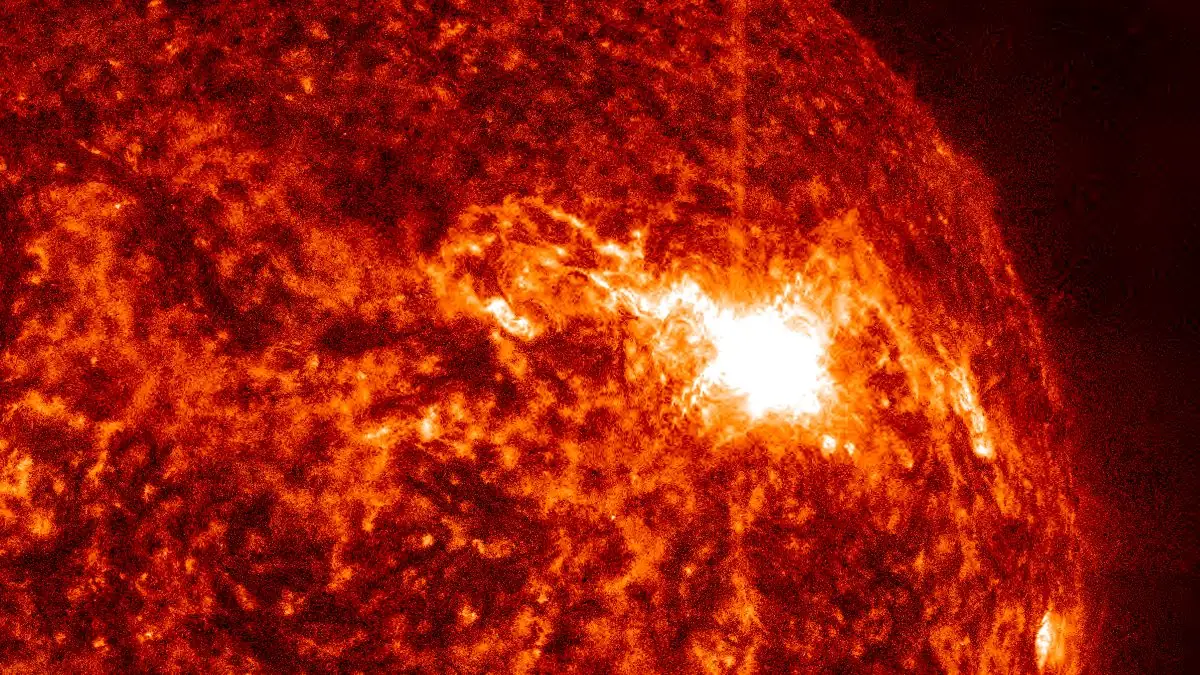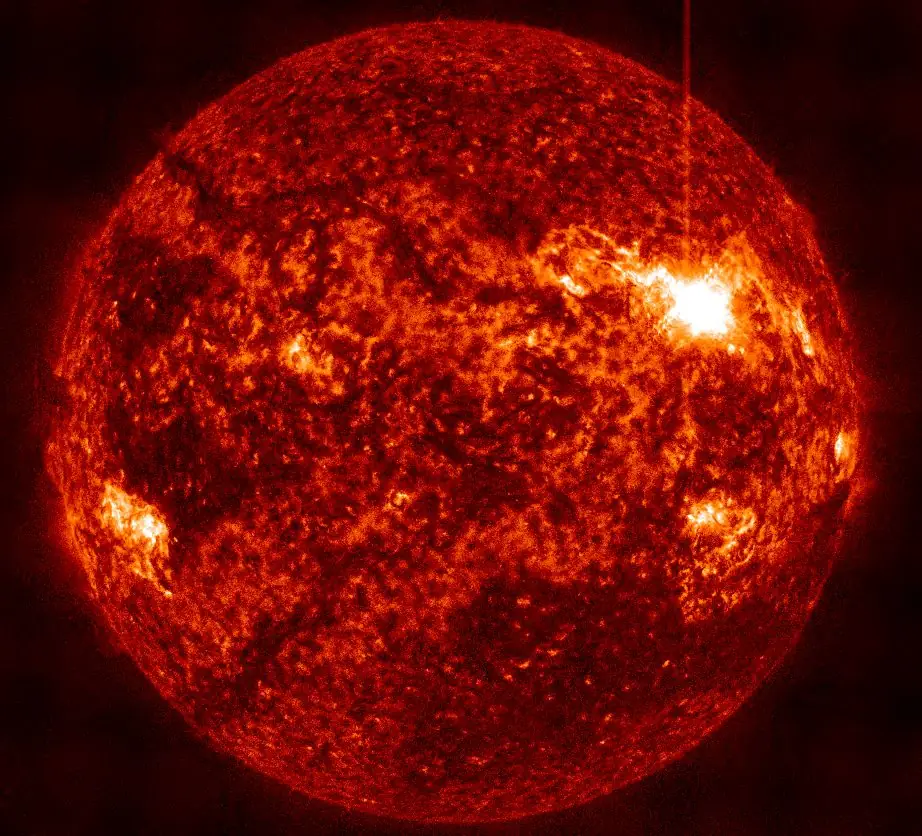Impulsive X1.9 solar flare erupts from Region 4114
An impulsive solar flare measuring X1.9 erupted from Active Region 4114 at 23:50 UTC on June 19, 2025. The event started at 23:37 and ended at 23:54 UTC.

X1.9 solar flare on June 19, 2025. Credit: NASA/SDO AIA 304, Helioviewer, The Watchers
There were no radio signatures that would suggest a coronal mass ejection (CME) was produced.
A 10cm Radio Burst lasting 1 minute and with a peak flux of 250 sfu was associated with this event. This noise can cause interference for sensitive receivers, including radar, GPS, and satellite communications.
Radio frequencies were forecast to be most degraded over the Pacific Ocean at the time of the flare.



This is the second X-class solar flare from Region 4114 since X1.2 at 21:49 UTC on June 17.
The Region 4114 remained the most complex on the disk over the past 24 hours despite being in a decay phase. The other numbered spotted regions on the visible disk were either mostly stable or in gradual decay.

There is a 65% chance of M-class and a 15% chance of X-class solar flares through June 22, driven mainly by the potential from Regions 4114, 4115, and 4117.
Due to continued influence from the coronal hole (CH) high speed stream (HSS), the greater than 2 MeV electron flux peaked just below the warning threshold on June 19. The greater than 10 MeV proton flux was at background levels.

The greater than 2 MeV electron flux will continue to be near the 1 000 pfu threshold during the diurnal maxima due to continued CH influence through June 20, with waning influences on June 21. The greater than 10 MeV electron flux is expected to remain at background, barring any significant flares. There remains a slight possibility for protons to become elevated due to an earlier CME on the far-side, but confidence is low.
Solar wind parameters continued to reflect a positive polarity CH HSS regime in 24 hours to 00:30 UTC on June 20. Total field (Bt) remained around 6-9 nT with the north-south (Bz) component oscillating between +/-7 nT. Solar wind speeds varied between ~450-600 km/s. Phi angle was predominantly in the positive (away from the Sun) orientation.

CH HSS conditions are expected to persist through June 20 with waning influences into June 21. There is a slight chance for an enhancement of solar wind parameters on June 20 due to a potential glancing blow from a CME that left the Sun on June 17.
Quiet to active geomagnetic field conditions are expected to persist on June 20 due to continued CH HSS effects. G1 – Minor geomagnetic storming is likely on June 20 due to any glancing influences from the June 17 CME. Unsettled conditions are expected to continue on June 21.
I'm a dedicated researcher, journalist, and editor at The Watchers. With over 20 years of experience in the media industry, I specialize in hard science news, focusing on extreme weather, seismic and volcanic activity, space weather, and astronomy, including near-Earth objects and planetary defense strategies. You can reach me at teo /at/ watchers.news.


Commenting rules and guidelines
We value the thoughts and opinions of our readers and welcome healthy discussions on our website. In order to maintain a respectful and positive community, we ask that all commenters follow these rules.